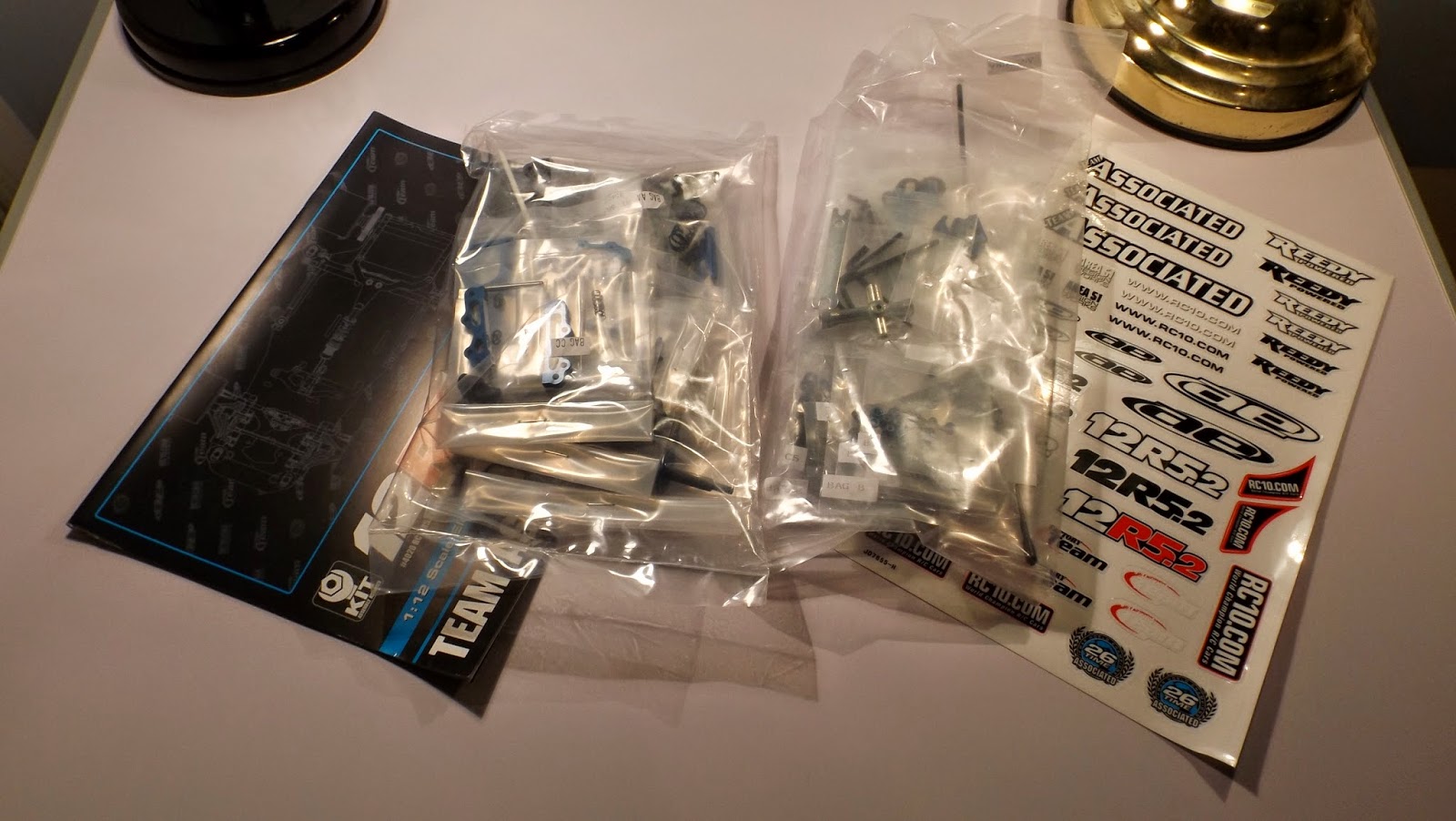A pan car. A RC12R5.2 actually. I've always really loved how pan cars look and how simple ( And cheap ) they are and once I found out I can race them locally at a new track, I just had to get one.
Now with the box open you get two big bags and that's it really it.
Page on gives you the main damper, damper tubes and turnbuckles.
Now since page two uses carbon it's time to seal all of it. Be very careful opening this bag, very sharp edges. Now I use a mix of ways to seal carbon ( Links down below to guides. ) but it pretty much every guide no one talks about sealing countersunk holes. This is actually rather important because having a the hole sealed like this makes for a much stronger car over-all.
Just dab a bit of CA on a Q-tip and carefully brush it on.
http://www.teamcrc.com/crc/modules.php?name=News&file=article&sid=16&mode=&order=0&thold=0 This is my main way of how I seal a chassis or any carbon part.
http://www.rctech.net/forum/electric-road/98346-how-perfect-carbon-fibre-edges.html VenomWorldOrder's tip on using a Q-tip is very important "-let it dry and then make a puddle of CA glue on the newspaper, wet the q tip in the puddle. be careful as the glue will dry quickly. i'd recommend letting it dry. when it drys it starts releasing a smoke DON'T BREATH IT, OR LET IT GET IN YOUR EYES!, then just dip it again in the CA. (i found that once the q tip has a layer of dried glue on it, the glue curing time takes longer, which is recommended because it gives you time to work with it."
But using bit of newspaper isn't good. A bit of a plastic bag will work much better. Plastic isn't really porous so it gives the glue a lot longer time to work with, also the glue won't soak into it.
And lastly http://www.competitionx.com/new-to-rc/rc-how-tos/prep-your-carbon-fiber-parts/ is also a good guide.
Anyway back to sanding more bits of carbon and most likely getting cancer.
Oh also, please don't use this as a step by step build. I'm too lazy to do that so I'm just going page by page.





No comments:
Post a Comment